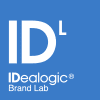With the continuous growth of digital marketing, there’s no doubt that brands are figuring out how to use the landscape more efficiently to garner the attention of target audiences. Moreover, what we’ve noticed at IDealogic® is that the 2019 digital marketing campaigns seem to be targeting the human psyche in an effort to create Brand to Human® campaigns.
This article highlights three of the top influential digital marketing campaigns of 2019, and the effect they’re having on target audiences and sales.
Gillette – The Best Men Can Be
If you don’t remember the social media uproar from Gillette’s 2019 commercial targeting toxic masculinity, let us refresh your memory. Following the #MeToo movement, Gillette took its stance on the issue by starting #thebestmencanbe, which encourages men “to be their best” and to demonstrate by example “what it means to be a great man, every day” in order to help put an end to toxic behaviors.
Once the “only choice” in their space, Gillette is now being substituted by competitors who are quickly gaining traction. With subscription brands like Harry’s and Dollar Shave Club on the rise, Gillette has seen a drop in market share over recent years. It’s possible that the company released an ad attacking toxic masculinity, which has been a hot topic for the public, in an attempt to restore the brand’s equity in the market.
In raising awareness, we think the company hoped to gain an expansion-demographic following of men and women who supported the message, and took a risk that their core audience might find its delivery offensive. The attempt backfired on social media when some men began taking pictures of themselves throwing away their Gillette razors in protest. The issue was the campaign’s divisive representation that, instead of better unifying and inspiring the audience, resulted in the creation of two sides of Gillette customers: those who agreed with the messaging and those who felt patronized and scolded.
Despite the backlash (some consumers even called for a ban against the brand), Procter & Gamble’s shaving giant didn’t experience a big financial hit from the digital marketing campaign. (The company is more affected by the trending popularity of beards and men shaving less often.) But in terms of sales, Gillette hasn’t lost any substantial revenue due to taking a societal stance. To date, the commercial on You Tube has 3,557,538 views, and the company continues to promote the campaign to “help men of all ages achieve their personal best.”
Dove – #ShowUs Campaign
Since the creation of the company’s Real Beauty campaign over ten years ago, Dove has been the leading brand for empowering all women. By showcasing the beauty of women of all ages, races, and body types through its efforts (consider the Real Beauty Sketches where women are shown how beautiful they are to others: shortly after launch, the commercial became the most watched video ad of all time; and to date, it has 68,568,775 views), the company has set out to shatter the stereotypes surrounding women. With the Dove Self-Esteem Project, the brand’s mission is to “ensure that the next generation grows up enjoying a positive relationship with the way they look—helping young people raise their self-esteem and realize their full potential.”
Dove has recently partnered with Getty images and Girl Gaze photographers to create #ShowUs, “the world’s largest stock photo library powered by women and non-binary individuals to shatter beauty stereotypes around the world.” Showcased in this library are women ranging from plus sized, to disabled, to black professionals, to those with skin conditions. This effort is done in hopes that businesses will use these stock photos in company ads and/or social media to further normalize all kinds of women.
70% of women still don’t feel represented in media and advertising. – Dove datapoint
From the #RealBeauty campaign alone, Dove’s sales increased from $2.5 billion to $4 billion in the first ten years. However, there have been some oversights that have caused difficulty for the brand—with the very audience the company has sought to empower. For example, in 2017 Dove released a controversial, three-second Facebook ad where a black woman lifted up her shirt to reveal a white woman who lifted up her shirt to reveal an Asian woman. Since it was ad about body soap, many perceived the ad as racist because they felt it conveyed a message of black women being dirty and lighter-skinned women being clean. In an attempt to undermine the damage, Dove tweeted a statement saying they “…missed the mark in representing women of color thoughtfully. We deeply regret the offense it caused.”
Oversights like this one do not change the fact that Dove has been the game changer in empowering women. The company has done a wonderful job in representing true beauty in all forms. By giving women the #ShowUs digital marketing campaign, the brand has shown that it’s still listening to its audience and working hard to represent real women and true beauty everywhere.
Adobe & Pantone & The Ocean Agency – Glowing, Glowing, Gone
After releasing Living Coral, its 2019 Color of the Year, Pantone—the company that provides a “universal language of color” to brands and manufacturers—received backlash by the public regarding the irony, as coral reefs are dying. In response to the issue, Pantone partnered with Adobe and The Ocean Agency to create three colors that represent the last vibrant colors that corals give off before they die. This beautiful yet terrible occurrence is called coral fluorescence: corals’ last line of defense from the increased heat, acidity, and pollutants of our oceans before becoming a bleached white color, which eventually leads to death.
These three companies are challenging other artists and designers to use the newly created colors to raise awareness about the issue. To encourage participation, the brands created an Instagram account that has a little over 2,800 followers since the account was created in late May. Artists that use these colors are promoted on Instagram and on the campaign’s website. Their work is used as a showcase to bring awareness to the environmental issue. The challenge is ongoing from June 3 to September 3.
Seeing companies take a stance on environmental issues is critical for all of us, and especially for the younger generation of today. If companies can align with millennials and Gen Z, it’s highly likely that brands will gain loyal followings just from helping bringing awareness to critical issues.
The Big Takeaway
A common trend in these digital marketing campaigns is that these companies are listening to their audiences. One of the most important lessons to take away from this article is that listening to your customers can turn your brand into being perceived as a trustworthy source that cares.
Gillette witnessed the #Metoo movement and decided to take action, even though the company knew that it would be targeting some of its own customers. Though it gained backlash, the brand also opened itself up to other segment groups and gained social media traction. After making an unintentional mistake, Dove listened to its audience and has since been much more conscientious in the ways the brand depicts its empowerment of women. Pantone listened to and aligned with what matters to the brand’s audience and rebounded from its blunder by teaming up with other companies to bring awareness to the dying coral reefs.
Consumers do want brands to take stances, to speak up, and to voice common beliefs. These beliefs are what ground companies in humanity and help bridge the gap between companies and people. And just like people, it’s okay if a company makes mistakes—as long as the brand listens and turns those mistakes into lessons. In many cases, this can even lead to increased sales and loyal followings.
We believe at IDealogic® that creating Brand to Human® campaigns are the best for strengthening relationships with consumers. When people can relate to and align with a brand, they can also feel a sense of belonging to the brand—and can then feel driven to support it through engagement and purchasing decisions. Don’t be afraid to make mistakes or take a stance–while at the same time listening to your audience and accepting their feedback in order to improve, pivot, and adjust. By doing this, you will continue to stay in their hearts and minds as a brand to trust.



